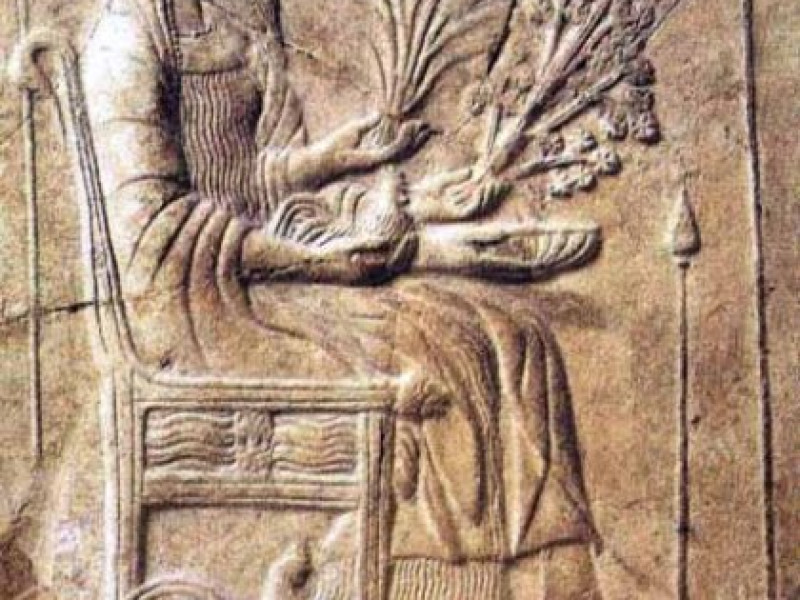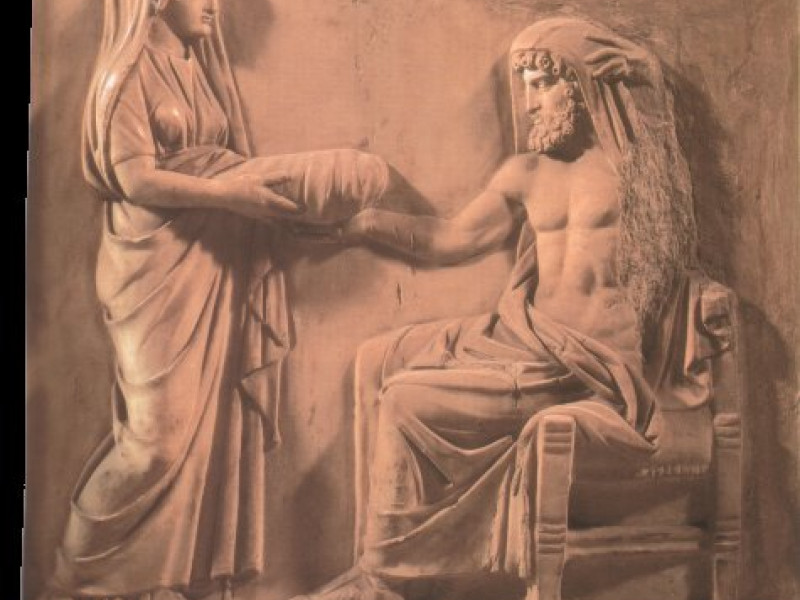Tartarus
Tartarus was the deepest region of the Underworld. It was said that it took nine days and nine nights for an anvil to fall from the earth's surface to the very bottom of Tartarus. Tartarus was the area where Zeus and the Olympians had confined Cronus and the other male Titans.
Originally Uranus (Ouranos) had confined the Hundred-Handed and the Cyclopes in Tartarus, but Zeus freed them during the war against the Titans. They were instrumental to Zeus' victory. With the Titans confined in Tartarus, the Hundred-Handed guarded the prison as warders. It was described that Tartarus was surrounded by a bronze fence with iron gates.
See War in Heaven and on Earth in the Creation page.
Only the most wicked of mortals were punished in Tartarus. This place was known as the Abode of the Accursed.
Tantalus, son of Zeus, had to stand in a pool of water with a large rock suspended over his head. Tantalus had thought that he could dupe the gods, who were his guests, into feeding on the flesh of his own son Pelops. For this hideous crime, he could not drink from the pool of water that he was standing in, nor could he eat the fig that was just out of his reach.
Several reasons were given for Sisyphus, king of Corinth and son of Aeolus. One of them was that he told Asopus that Zeus had abducted Aegina, Asopus' beloved daughter. While another says that Sisyphus had imprisoned Thanatos, god of death, so that for a time, no one could die. Though Ares had rescued Thanatos, Sisyphus tricked Hades into letting him return to the surface. The other reason for his punishment was that Sisyphus learned from the oracle that he might disclose all of the secrets of the gods. Whatever the cause of his punishment was, Sisyphus had to toil in Tartarus, forever having to roll a large boulder uphill. Each time, before he reached the summit, the boulder would roll back down to the bottom of the slope.
The giant Tityus had tried to rape the Titaness Leto, mother of Apollo and Artemis, who was travelling to Delphi. Apollo and Artemis had not only killed him with their arrows, but he was punished in Hades where two large vultures would feed on his liver. (See Leto about Tityus.)
Ixion, king of the Lapiths, was similarly punished for an attempt of rape. The object of his lust was Hera, consort of Zeus. Zeus had suspected the king's lust, and created a phantom made out of cloud, that resembled Hera. Zeus caught Ixion in bed with the bogus Hera. Zeus punished Ixion by chaining him to a fiery revolving-wheel.
Then, there were the fifty daughters of Danaüs, king of Argos. His daughters were known the Danaïdes. Danaüs' brother Aegyptus had fifty sons who wanted to marry the Danaïdes. Danaüs was forced to accept his nephews' proposals of marriage to his daughters, but on their wedding nights, Danaüs gave a dagger to each of his daughters with instructions to murder their new husbands in their sleep. Only Hypermnestra disobeyed her father's order, saving Lynceus. The Danaïdes, except Hypermnestra, were punished for their husbands' murders after their deaths, forever drawing water in leaky buckets.
According to classical myths, Tartarus was an offspring of Chaos and born at the same time as Gaea (Earth) and Eros (Love). Tartarus was nothing more than a personification of the region, yet it had mated with Gaea producing monstrous offspring, including Typhon and Echidna.
See also Tartarus in Ancient Deities.
By Jimmy Joe



